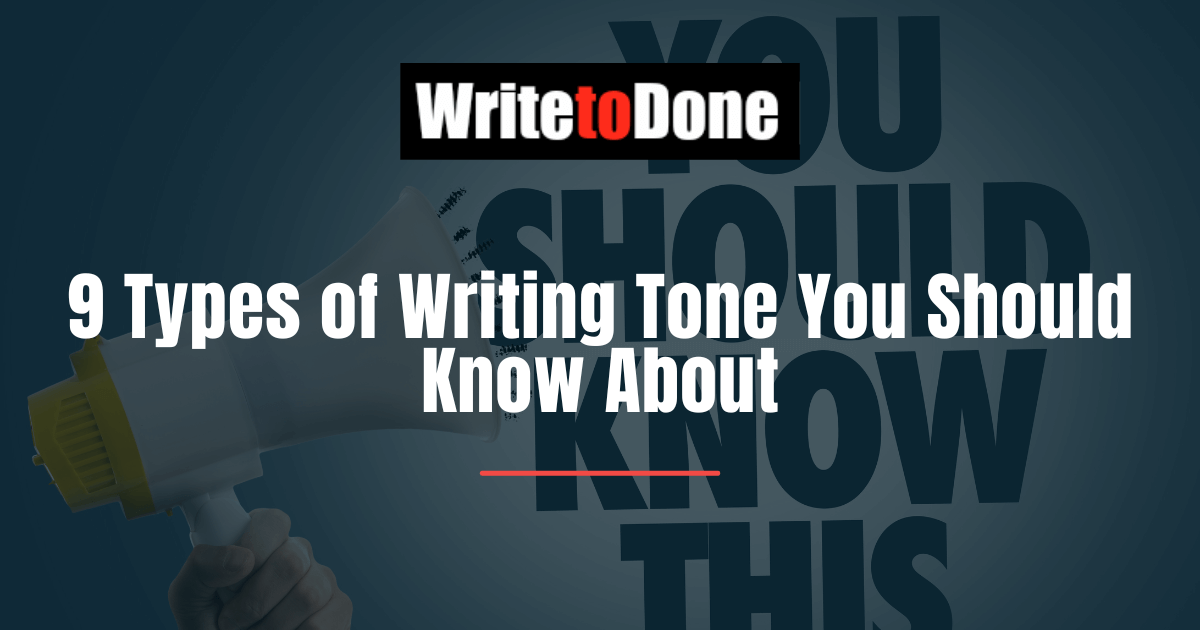You might know that there are different types of tone in writing. But what are they, and why do they matter?
The tone is a crucially important part of writing, but what is it exactly? To explain it in basic terms, tone generally refers to how the writer uses a certain set of words in a specific manner in order to convey their non-verbal observations about certain subjects. The tone is important as it helps a writer to deliver facts with an attitude, personal perspective, as well as emotion.
At times, the tone can be interchangeably used with the author’s own voice.
However, you shouldn’t confuse these two as they are quite different; the writer’s voice is simply a perspective of their own personality, while the purpose of the writer’s tone is to convey their specific attitude about the thing they are writing about.
When the tone is combined with a voice, it creates a highly distinct writing style that gets attributed to that certain writer.
Any perspective, attitude, and emotion can be used for laying a foundation for the intended tone in writing. In case you are able to come up with the adjective, that adjective can be considered as a tone. In other words, if you decide to perceive tone with specificity, you’ll discover that you can use an infinite number of it.
Here are the nine types of tone to know about in writing:
1. Serious: This tone attempts to create a level of suspense within you as a reader. It can increase your focus because the concepts you are being offered by a writer are important.
2. Joyful: This tone focuses on all the positive emotions that one experiences in the moment of the action. For example, when you eat your favorite food, you feel joy. When you experience the love that is reciprocated, you feel happy. A writer uses this tone for creating relationship-building experiences between a reader and the characters the writer created.
3. Humorous: Being funny is so much more than simply making you laugh. It can also motivate you to think about a variety of difficult concepts in a safe way. This tone is usually intended to draw a reader into the narrative or story so that they will be engaged with certain opinions and facts an author feels are worth sharing.
4. Sad: Sadness is an inseparable part of human nature and life. In a lot of ways, an individual’s saddest days can define who they are as a person. When a writer uses a sad tone in writing, a reader becomes sympathetic with a writer or the characters and this empathy can keep the reader engaged with a narrative.
5. Formal: This tone is oftentimes seen from the academic standpoint as it requires higher reading skills, structured language as well as presents more facts rather than the writer’s opinions.
6. Informal: The goal of this tone is to be conversational while conveying a sense of expertise the writer has within a subject material.
7. Optimistic: There are many negative things happening in our world today. But there is also the belief that our world can and will become a better place someday if we decide to work for this goal together. That is exactly the example of the optimistic tone in writing.
8. Pessimistic: When the world seems like a terrible place, it may feel like the bad things will only get worse and nothing will ever change for the better. That kind of tone is exactly the example of a pessimistic tone.
9. Horror: This tone can feel threatening in nature as it speaks to the common, universal fears that humans have, forcing them to confront all those fears.
It is important to mention that even though there are nine basic types of tone in writing, it does not necessarily mean that the writer has to use only one tone while composing something.
The writer can use all of the nine tones in a certain way in specific instances. So make sure to keep these tones in mind as well as how each tone can relate to a voice being used.
If you are a writer, it is even more important to remember this information; it will help you to choose the right style and communicate the key points that you want to share with your readers.
















